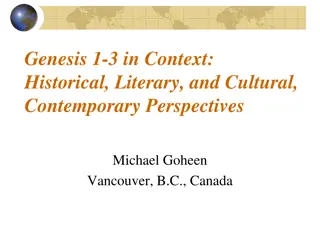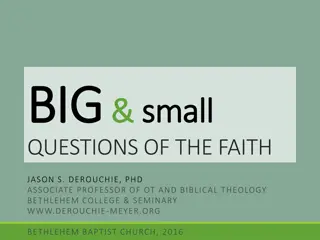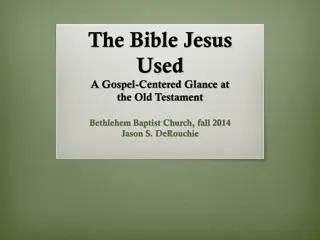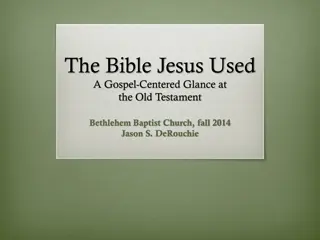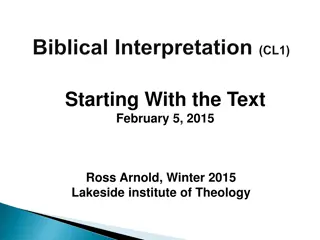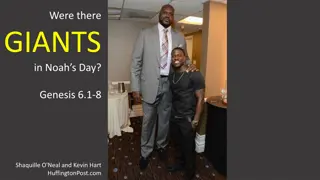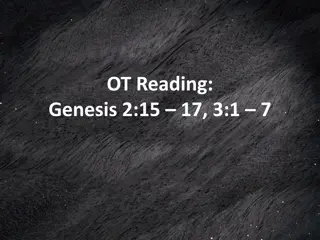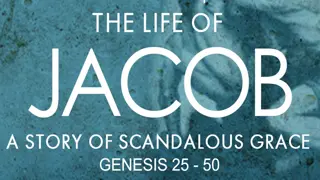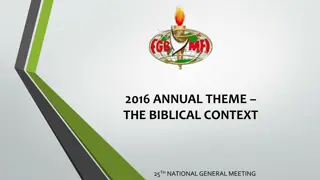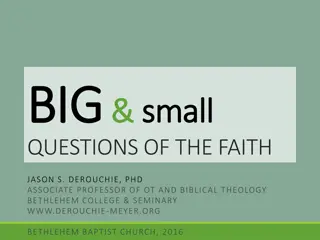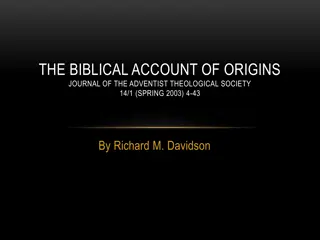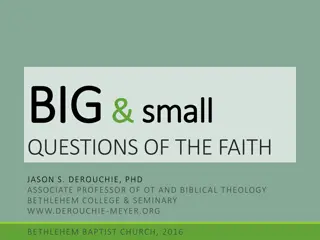Unraveling Biblical Genealogies: Genesis 5 and 11 Insights
Explore the unique nature and significance of biblical genealogies, focusing on Genesis 5 and 11. Dive into the textual history, interpretation, and interlocking time specifications of these chronogenealogies, shedding light on the godly lineage from Adam to Abram and the origins of antediluvian culture.
Uploaded on Sep 29, 2024 | 0 Views
Download Presentation

Please find below an Image/Link to download the presentation.
The content on the website is provided AS IS for your information and personal use only. It may not be sold, licensed, or shared on other websites without obtaining consent from the author. Download presentation by click this link. If you encounter any issues during the download, it is possible that the publisher has removed the file from their server.
E N D
Presentation Transcript
Genesis 5 and 11: Chronogenealogies in the Biblical History of Beginnings Gerhard F. Hasel
There is a renewed interest in biblical genealogies in general and in Genesis 5 and 11:10-26 in particular. It is important to consider Genesis 5 and 11 in view of Their unique nature and function in the book of Genesis and in relation to other genealogies Their textual history Their interpretation
There is a renewed interest in biblical genealogies in general and in Genesis 5 and 11:10-26 in particular. It is important to consider Genesis 5 and 11 in view of Their unique nature and function in the book of Genesis and in relation to other genealogies Their textual history Their interpretation
Unique Nature and Function Trace the godly line, the carriers of God s promises Genesis 5--Adam to Noah Genesis 11--Shem to Abram
Unique Nature and Function Cain s line (Gen. 4:17-24) Father-son relationships Origins of antediluvian culture Places of settlement Polygamy Sheep-breeding Musicians Metal workers Seth s line (Gen. 5) Interlocking pieces of chronological information: Birth Age at birth of first son Subsequent years lived Total years lived
Unique Nature and Function Chronogenealogies These interlocking time specifications are not found in any other genealogies
Textual History Different textual translations Hebrew text (Masoretic text or MT) Samaritan Pentateuch Greek Septuagint (LXX) Josephus Not much help Book of Jubilees Before the Flood, largely follows Samaritan Pentateuch About 4,000 (+/-200) from Creation to Christ Caution is in order in view of systemization
Hebrew text All known Hebrew manuscripts agree in both Genesis 5 and 11:10-26: antediluvian patriarchs (before the flood) post-diluvian patriarchs (after the flood) time information for each one Completely irregular no evidence of scheme or system
Comparison Hebrew Text Samaritan Version Life spans are decreasing Decreasing ages in year of first-born Life spans appear adjusted near the flood No pattern in life spans No pattern in year of first- born
Originality? Systemization is evidence of alteration Non-schematized figures of the Hebrew text are original Scholarly consensus is that the Hebrew text has preserved the original figures in their purest form.
Septuagint (LXX)textual variants Vaticanus Alexandrinus Methuselah s age when his son was born: 167 (without reducing total lifespan) Methuselah s age when his son was born: 187 Methuselah outlived the flood by 14 years Nahor s age when his son was born: 79 Nahor s age when his son was born: 179
Septuagint(LXX) Addition of a Cainan in the list of generations from the flood to Terah Also in the Book of Jubilees Not in Hebrew, Samaritan Pentateuch, Vulgate, Syriac versions, or Josephus. This puzzle remains largely unsolved Inserted on purpose to come up with 4,260 years from creation to Solomon s Temple Scribal error Figures are identical for Cainan and Shelah who follows (probably added to Jesus genealogy later)
Comparison Hebrew Septuagint (LXX) Longer (by 1,386 or 1,466 years) Shorter Far greater regularity Age at birth of first son Years after birth of son Age at death Irregular
Originality? Majority scholarly opinion holds that the less schematized and the more irregular chronology has claim to originality
Conclusions The Hebrew MT has non-schematic figures The Samaritan version shows evidence of schematization and the Septuagint (LXX) even more so. At the present it is impossible to decide on the basis of external manuscript evidence which figures (MT or LXX) have priority and can claim originality
Genesis 5 and 11 Chronogenealogies in the Biblical History of Beginnings Origins 7/1 (1980) 23-37 Gerhard F. Hasel
Summary and Narration: Carol Raney Design: Jessica Drahozal Photo credit: http://www.flickr.com/photos/stockerre/48028909 82/
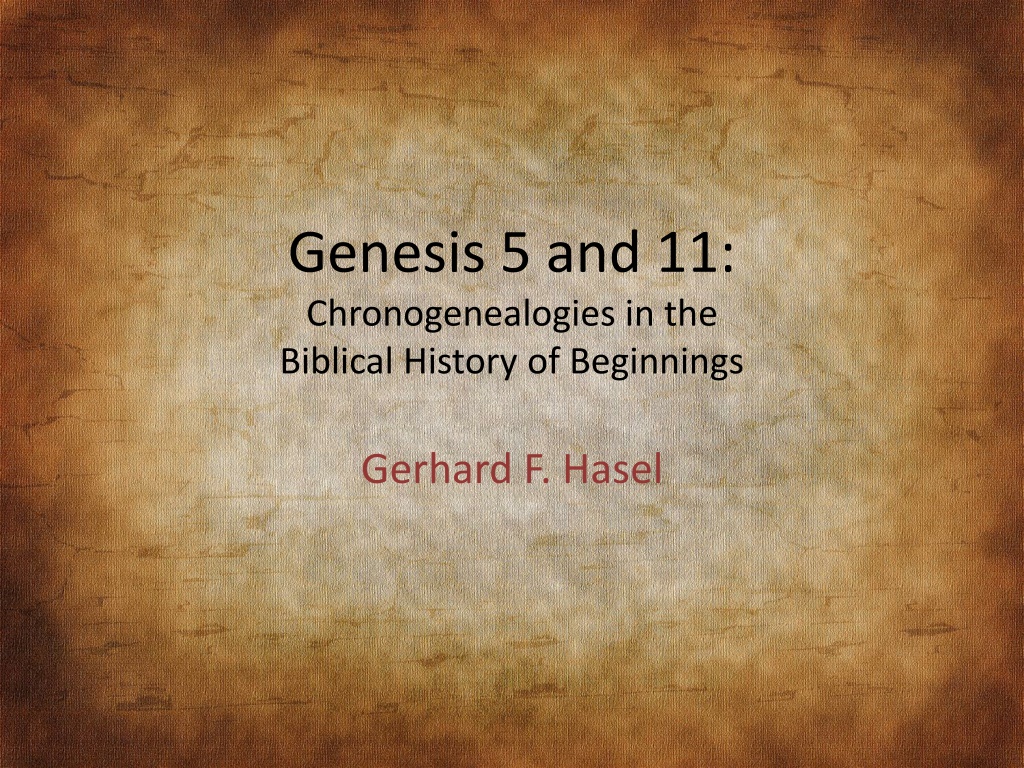

![❤[PDF]⚡ Escaping from Eden: Does Genesis Teach that the Human Race was Created](/thumb/21697/pdf-escaping-from-eden-does-genesis-teach-that-the-human-race-was-created.jpg)
